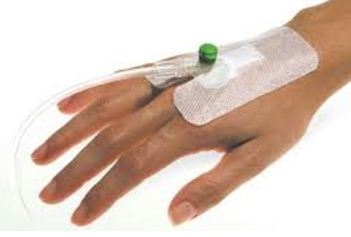Anaesthesia
Local anaesthesia
During local anaesthesia drugs are injected using a fine needle around an area to make the tissue numb before surgery starts. The patient remains fully awake during this procedure. Local anaesthesia is given by the surgeon immediately before performing the surgical procedure.
There are many types of local anaesthetic drugs available. In the UK, lidocaine and bupivacaine are the most frequently used. This type of anaesthesia is very safe and can be used for many types of minor surgery.
Side effects are very rare. These include allergic reactions to the local anaesthetic and accidental injection of local anaesthetic into the bloodstream.
Sedation
In some circumstances a patient who is too anxious to comply with surgery under local anaesthesia might be offered sedation. This is a drug usually given intravenously to make the patient more relaxed. It does not make the patient fall asleep. This type of procedure can only be used in specialised clinics.
General anaesthesia
This is commonly required for many maxillofacial operations. Anaesthetic drugs are administered to the patient by a doctor who specialises in giving anaesthetics (anaesthetist). These procedures can only be carried out in a hospital setting. Patients are rendered unconscious for the duration of the operation.
Before having an anaesthetic all patients are assessed by an anaesthetist to make sure that they are medically fit enough for anaesthesia. There is also opportunity for the patient to ask questions and to express concerns or fears.
Anaesthetic drugs are given intravenously through a cannula in most circumstances (see Figure 1).

Small children may be given anaesthetic gas to induce anaesthesia. Once the patient is asleep a breathing tube is passed through the mouth or the nose to ensure breathing is controlled during the operation. In a few special circumstances an artificial opening for a breathing tube has to be created by the surgeon, with direct access to the windpipe, a so called tracheostomy. Pain relief is given during the procedure so that the patient wakes up feeling comfortable.
All patients are fully monitored during the procedure and an anaesthetist is constantly with the patient until they wake up.
Common side effects of general anaesthesia include
- nausea and vomiting
- drowsiness
- sore throat and nose.
Less commonly, serious reactions to the anaesthetic may occur.
Very rarely general anaesthesia can be life threatening.
Following a procedure under general anaesthesia the patient stays in a recovery room for some time to make sure that they safely recover from anaesthesia. Once the patient is fully awake and stable they are returned to the hospital ward.
Some patients may go home the same day, others need to stay in hospital. This is dependent on the medical fitness of the patient and the complexity of the operation.